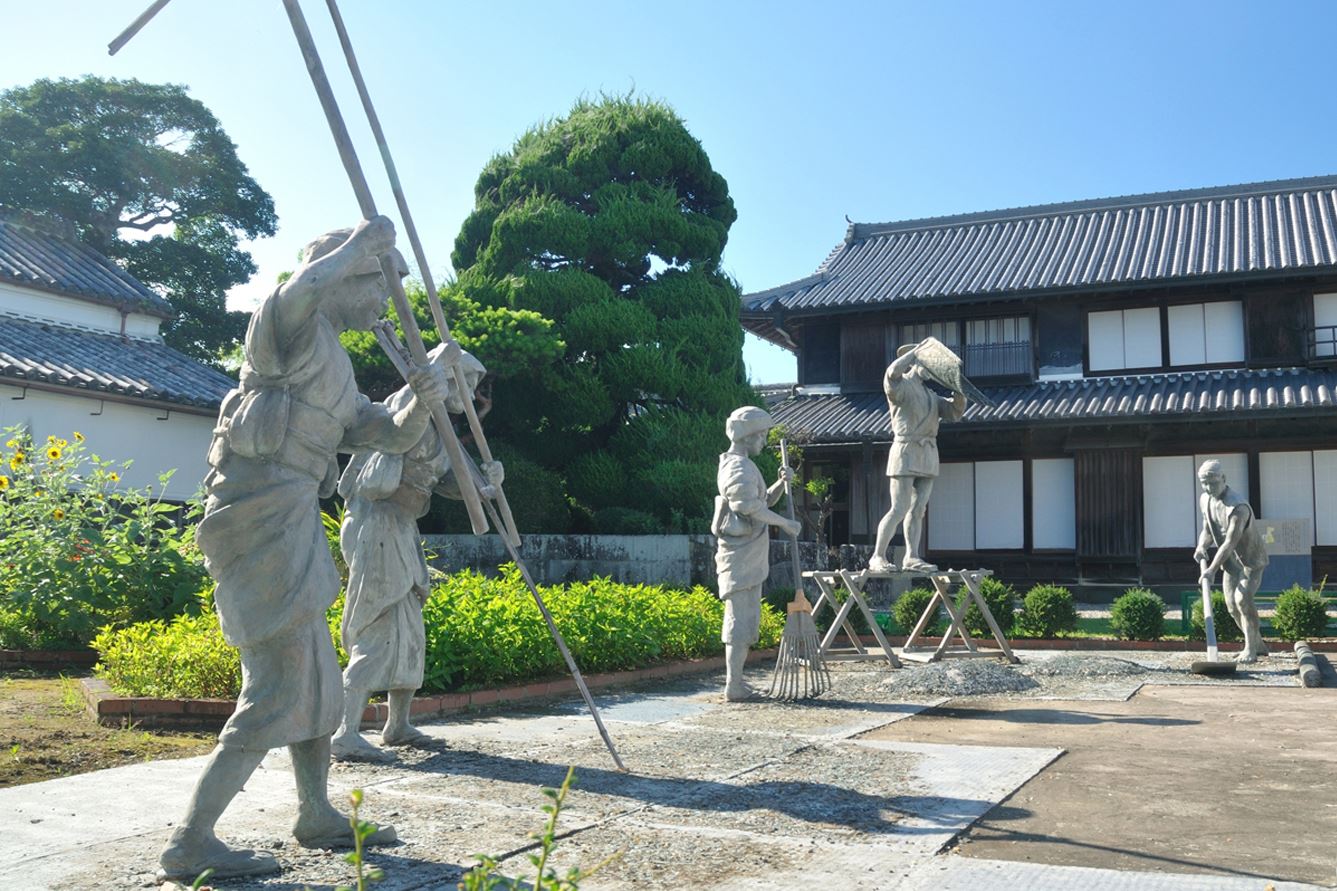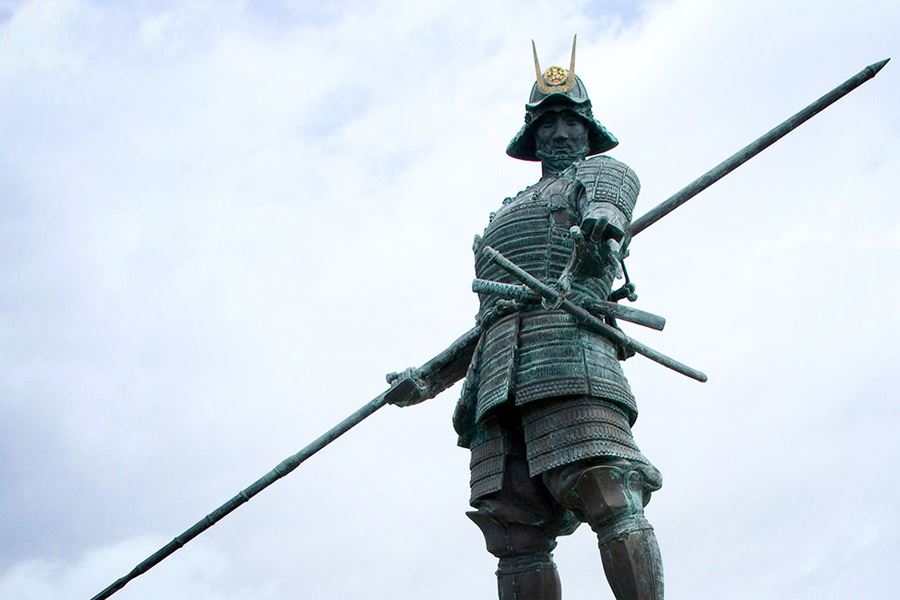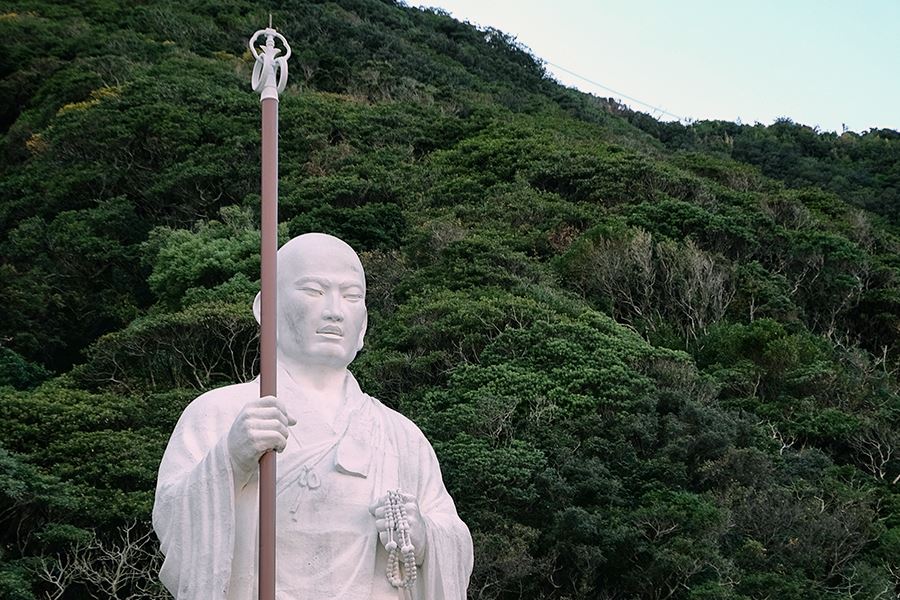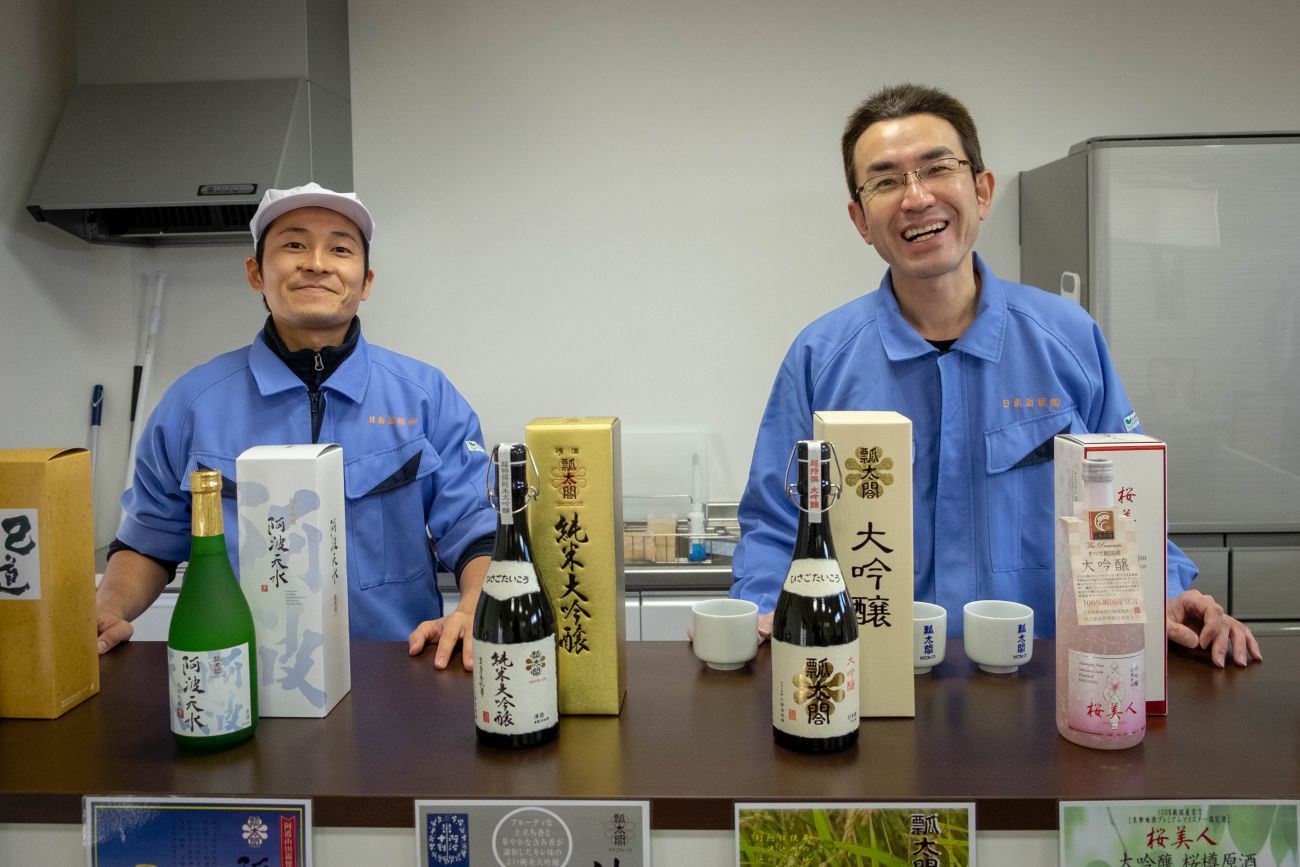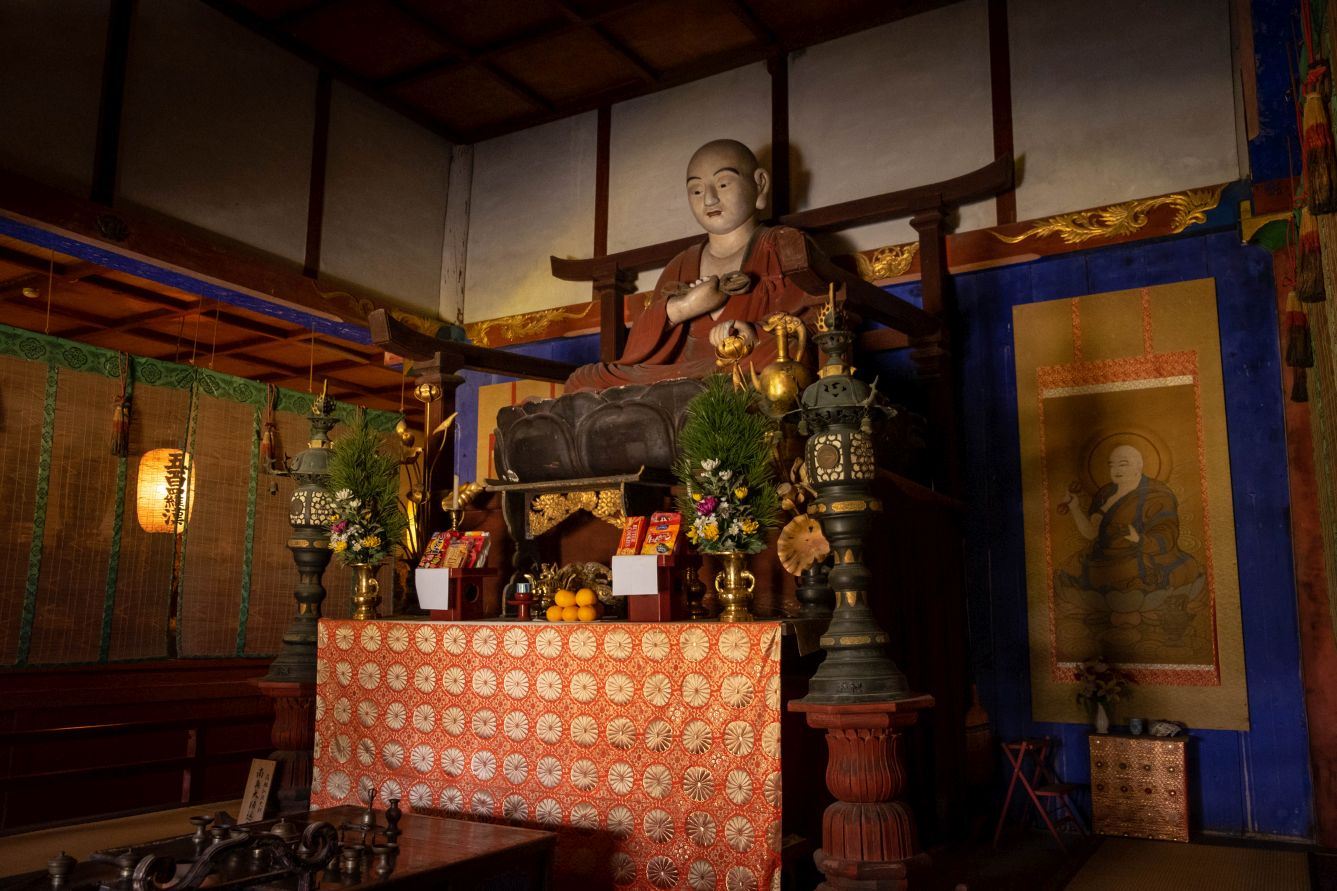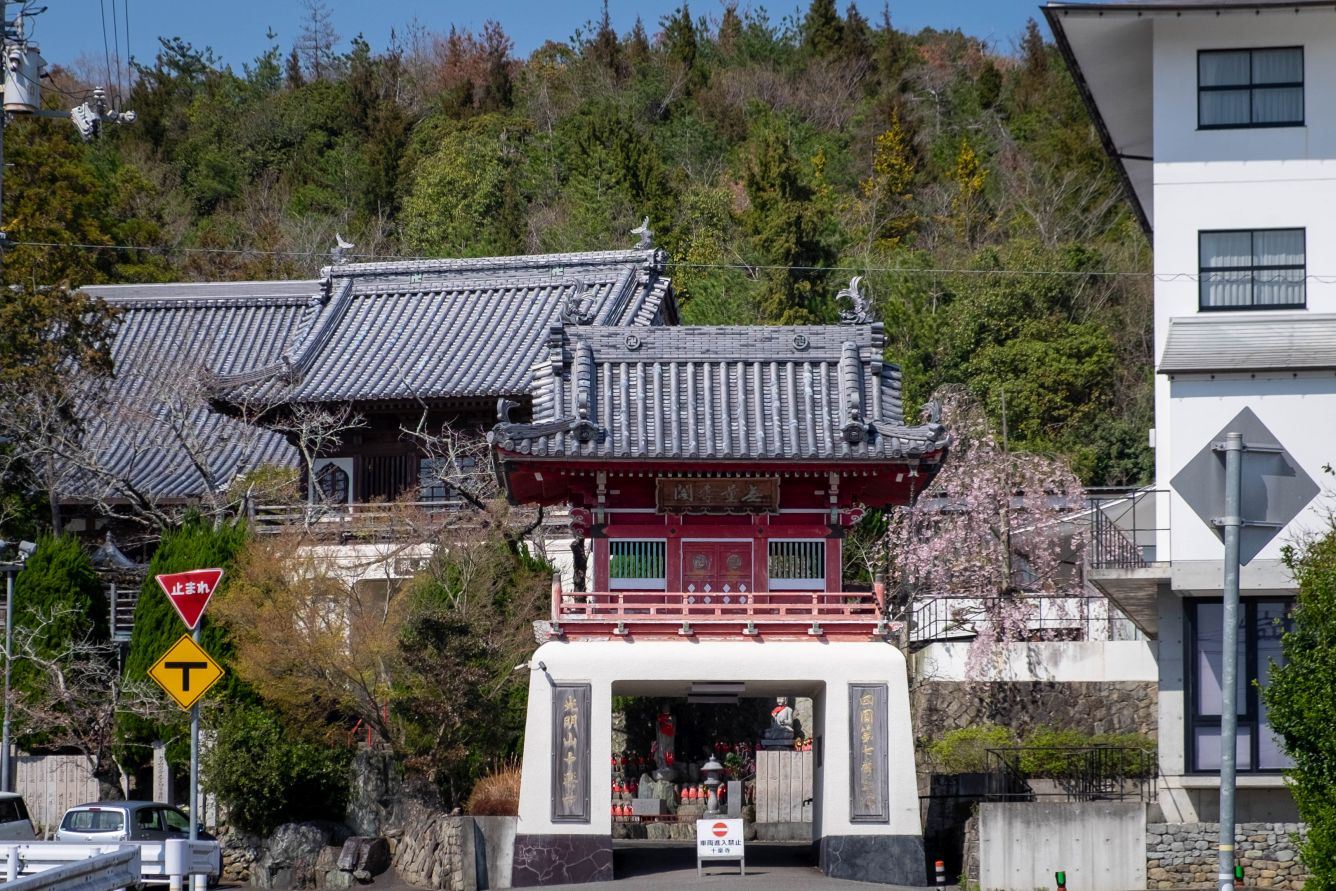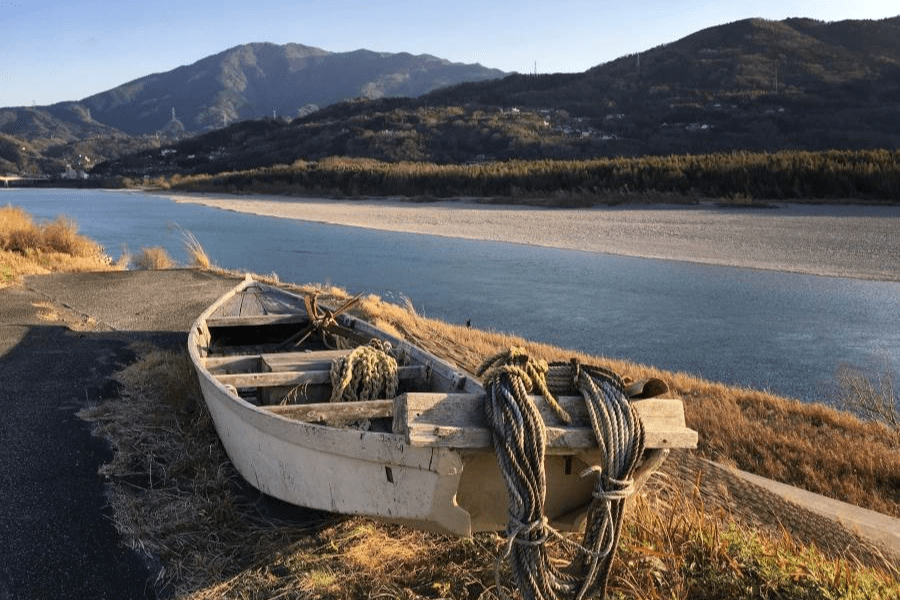Temple 6, Anraku-ji
Home » Temple 06, Anraku-ji
Temple 6, Anraku-ji
Anraku-ji is temple No. 6 on the Shikoku pilgrimage, or Henro.
What to see
The main gate is in the Ming Chinese style. There are dramatic temple guardians on either side. In the old days, pilgrims who didn’t stay in the temple lodging would sleep on the second floor of the gate.
After you pass through the main gate, there’s a washbasin on the right, a Japanese garden with a pond in the centre on the left side, and a two-storied pagoda behind the pond. The main hall faces towards the gate, with the Daishi Hall on the right and Kannon Hall on the left. Near the main hall is a statue of Kūkai on the road. Sticks placed near him are used in a ritual thought to bring good fortune. There’s also an ‘upside down pine tree’.
History
During the Heian period, Kūkai was traveling around Shikoku and discovered a hot spring here. The spring was known for its efficacy in curing all illnesses. In 815, Kūkai carved an image of Yakushi Nyorai and built a temple to house it a short distance from the current location. Over time, due to the benefit of the hot spring, the temple buildings came to stretch all the way to the nearby hills, and the sound of temple bells never stopped. But in the late 1500s, the whole area was burnt down by Chōsokabe Motochika. A century later, the temple was rebuilt at the present location.
Around the time that Chōsokabe was unifying Shikoku, the authorities in the Awa domain where Anraku-ji is located were concerned that there was no accommodation for pilgrims in the region, so they designated the temple as a place that would provide accommodation and meals to people passing through. Due to its healing hot spring, it was an obvious choice. Consequently, Anraku-ji has probably the oldest temple lodging in Shikoku. It has space for 250 people at a time.
Legends
When Kūkai discovered the hot spring here, he declared that this area was closely related to Yakushi Nyorai, the Buddhist deity of medicine and healing.
While Kūkai was rooting around in the brush looking for the source of the hot water, a hunter mistook Kūkai for a wild boar and fired an arrow at him. The arrow missed and hit a pine tree. Kūkai planted a branch of the pine upside down, and predicted that if it prospered, those who visited this area would be spared disaster.
Information
Name in Japanese: 安楽寺
Pronunciation: anrakuji
Address: Hikino, Kamiita-cho, Itano-gun,Tokushima 771-1311
Related Tours

Experience the most beautiful and interesting temples of the Shikoku Pilgrimage in seven days.

A tour for families or friends, staying in the most characterful kominka and ryokan of Shikoku.

Visit the most beautiful and interesting temples of the Shikoku Pilgrimage and walk the toughest trails.

